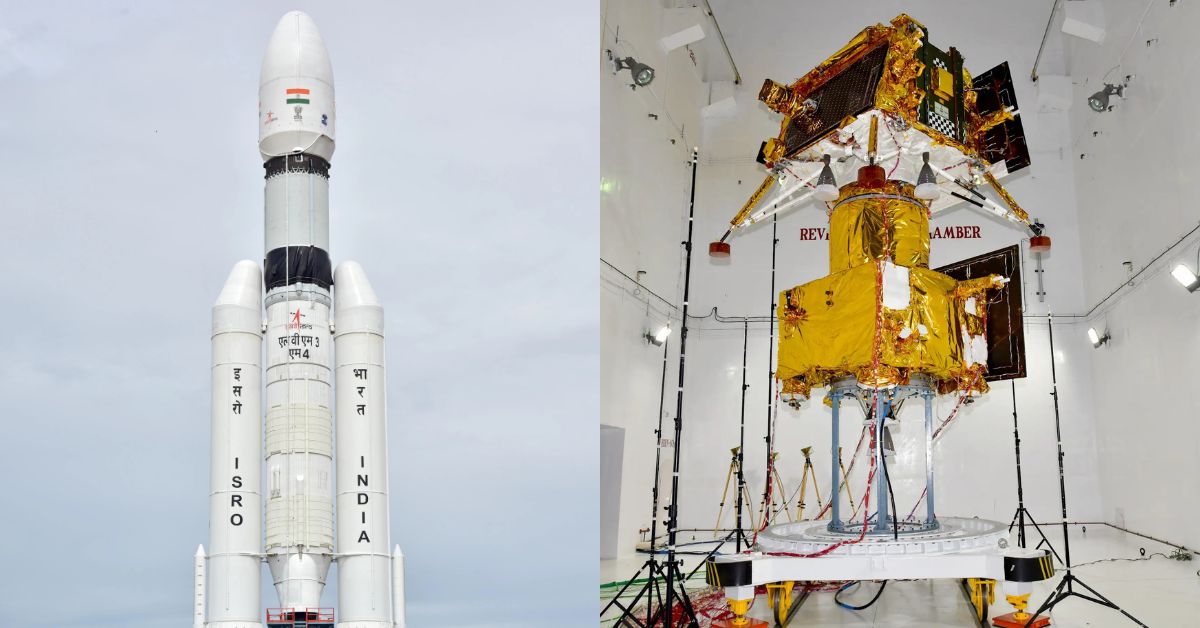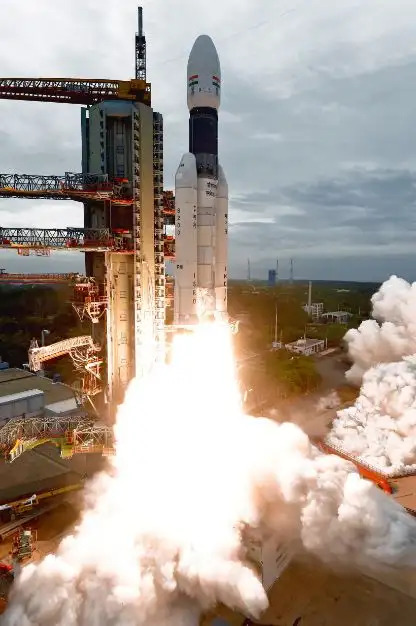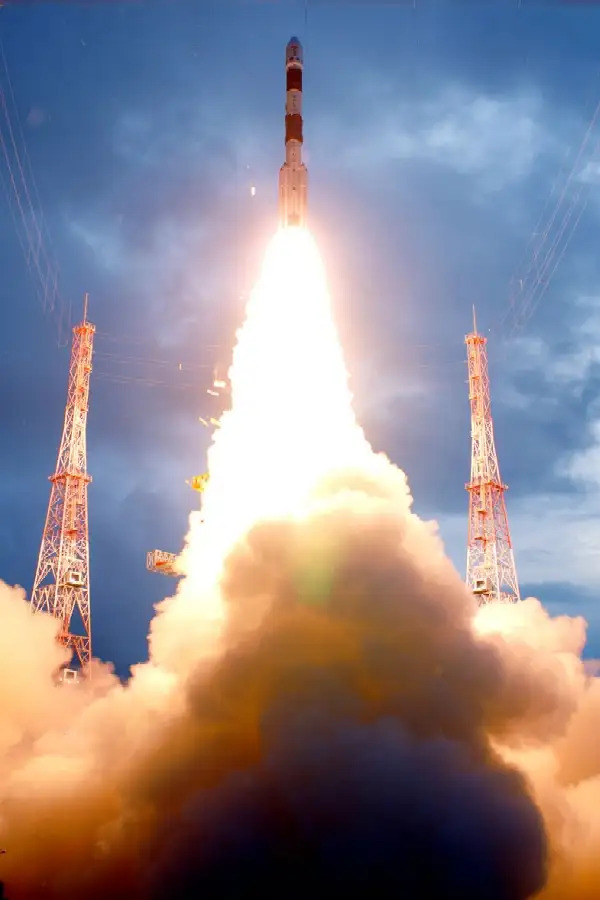Chandrayaan-3: The History of How India Began One of Its Most Significant Space Journeys
As we wait with bated breath for the launch of Chandrayaan-3, here’s a journey back in time to how the mission came to be, and its significance in India’s quest to explore space.

The Indian Space Research Organisation (ISRO) announced that it would be launching its ambitious lunar mission Chandrayaan-3 on July 14 at 2:35 PM. The launch would take place from the space port at the Satish Dhawan Space Centre in Sriharikota, Andhra Pradesh.
ISRO Chairman S Somanath said the lander is expected to soft-land on the lunar surface on August 23 or 24.
“The launch of Chandrayaan-3 will be on July 14 . If the launch takes place on that day we will be ready for landing on the moon possibly by the last week of August. The date is decided by the sunrise on the moon. When the landing takes place, sunlight has to be there. A day on the moon is 15 Earth days. You will have sunlight for 15 days and in the next 15 days there will be no sunlight for a given location,” Somanath told reporters on the sidelines of the G20 meeting on the space economy.
Chandrayaan-3 is India’s third lunar mission. As everyone waits with bated breath for the launch, here’s a brief history of Chandrayaan-2 and Chandrayaan-1.
Announcing the launch of Chandrayaan-3:
?LVM3-M4/Chandrayaan-3 ?️Mission:
The launch is now scheduled for
?July 14, 2023, at 2:35 pm IST
from SDSC, Sriharikota
Stay tuned for the updates!— ISRO (@isro) July 6, 2023
Chandrayaan-2: A stepping stone

Chandrayaan-3 is a follow-up to Chandrayaan-2, and a result of four years of efforts by ISRO.
The earlier mission was launched on 22 July 2019 into space using the Geosynchronous Satellite Launch Vehicle Mark III. The project cost Rs 978 crore.
The Chandrayaan-2 spacecraft consisted of an orbiter, a lander (Vikram) and a rover (Pragyan).
The aim was to soft land Vikram on the lunar surface and deploy Pragyaan to carry out scientific experiments. It also wanted to achieve the first-ever landing in the Lunar South Pole Region.
Unfortunately, the lander, named Vikram, experienced a hard landing on 07 September 2019. This destroyed the rover.
The orbiter was successful, placed in the desired orbit and will be used by Chandrayaa-3. Chandrayaan-2 was also a fully indigenous mission. It was also the first to be led by women scientists. Muthayya Vanitha was the project director and Ritu Karidhal was the mission director of Chandrayaan 2.
Chandrayaan-1

Chandrayaan-1 was India’s first mission to the moon. It was launched on a PSLV rocket on 22 October 2008.
It carried 11 scientific instruments which were built in India, USA, UK, Germany, Sweden and Bulgaria.
The satellite made over 3,400 orbits around the Moon and the mission was concluded after ISRO lost communication with the spacecraft on 29 August, 2009. The orbiter discovered water on the Moon, which was announced by NASA in September 2009.
In many ways, Chandrayaan-1 was the beginning of bigger space missions by India.
In an interview, Chandrayaan-1 Mission Director Srinivasa Hegde said that it was Dr K Kasturirangan, who chaired ISRO from 1994 to 2003, who wanted the organisation to play a small role in India’s ambition to become a superpower.
“The idea of a Moon orbiter was floated around and was received positively by everyone. At the time, ISRO already had geostationary satellites, which had plenty of fuel. The basic infrastructure was ready and the only delta required was adapting it to the Moon. Initial calculations showed that our PSLV rocket could provide an Earth-bound orbit beyond which the fuel on the spacecraft could be used to go to the Moon and perform orbital capture. In all, Chandrayaan-1 seemed like a logical extension of our capabilities,” said Hegde to Supercluster
Chandrayaan-3
pic.twitter.com/7V6nHsxE5V— ISRO (@isro) July 5, 2023
Now, Chandrayaan-3 will complete the mission started by Chandrayaan-2.
It is an attempt to land on the moon and demonstrate end-to-end capability in safe landing and roving on the lunar surface.
Only three countries, the United States, the erstwhile Soviet Union, and China, have achieved successful moon landings.
Another objective is to demonstrate the roving capabilities of the rover, and conduct scientific experiments. The Chandrayaan-3 mission carries scientific instruments to study the thermophysical properties of the moon. In March 2023, the Chandrayaan-3 spacecraft completed the necessary tests to demonstrate its capability to manage the environment during launch.
Chandrayaan-3 consists of a lander module, propulsion module and a rover.
The ISRO chairman said that they have learned from the failure of Chandrayaan-2 and incorporated those learnings.
“Chandrayaan-2 was unsuccessful at the landing stage and we have collected the elementary data of the landing and carried out an analysis, simulation and studied the problems in the landing stage. Since the lander crashed onto the moon, we have data that was recorded at the time of the crash. We have used the data to simulate the incident. We have found that there are three or four reasons that the landing was a failure,” said Somanath.
In a conversation with News18.com, former ISRO chairman K Sivan said that they have learnt from Chandrayaan-2’s mistakes. If you found our stories insightful, informative, or even just enjoyable, we invite you to consider making a voluntary payment to support the work we do at The Better India. Your contribution helps us continue producing quality content that educates, inspires, and drives positive change. Choose one of the payment options below for your contribution- By paying for the stories you value, you directly contribute to sustaining our efforts focused on making a difference in the world. Together, let’s ensure that impactful stories continue to be told and shared, enriching lives and communities alike. Thank you for your support. Here are some frequently asked questions you might find helpful to know why you are contributing?

“Basically, there were a few things, not only one problem. Over the past four years, tremendous work has been done. And the first and foremost one was that in Chandrayaan 2, the landing phase was not successful, whereas the orbital mission was partly successful. The data that we gathered during that time, that data was analysed very thoroughly, understood what really went wrong, and now for each problem that we observed corrective actions have been taken. We have understood the total data, analysed the data, and understood the problem. Now corrective actions have been taken considering all these issues,” said Sivan.
Edited by Divya Sethu
Sources
‘Chandrayaan 3 Will Be A Success, Corrected Our Mistakes, Lander Strengthened: Ex-ISRO Chief’ by Harish Upadhya for News18, Published on 7 July 2023
‘ISRO gears up for Chandrayaan-3 launch on July 14, says lessons from last landing failure give hope of success’ Published on 7 July 2023 Courtesy The Indian Express
‘India’s role in the new race to the moon’ by Jatan Mehta for Supercluster, Published on 5 August 2020
This story made me
- 97
- 121
- 89
- 167














